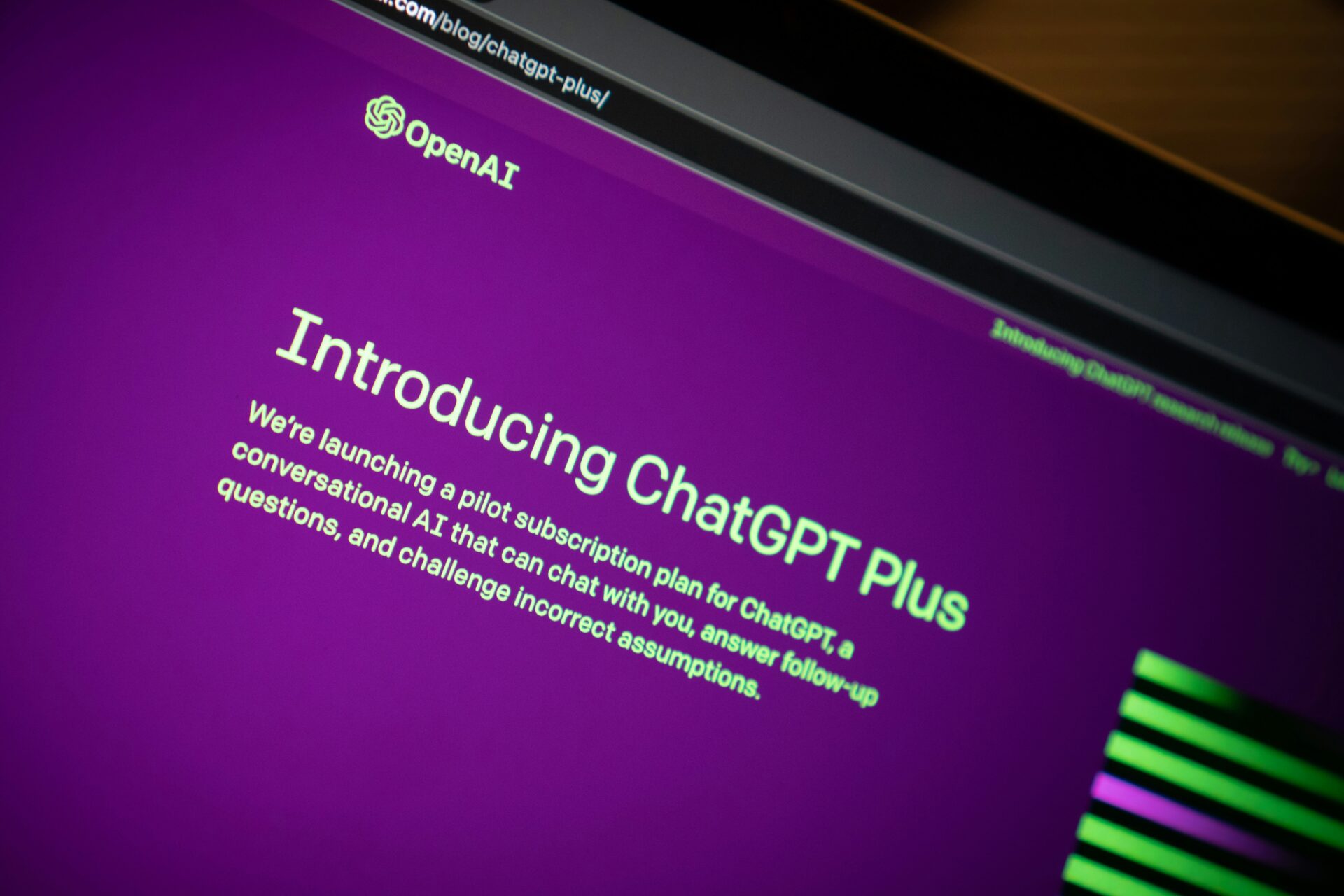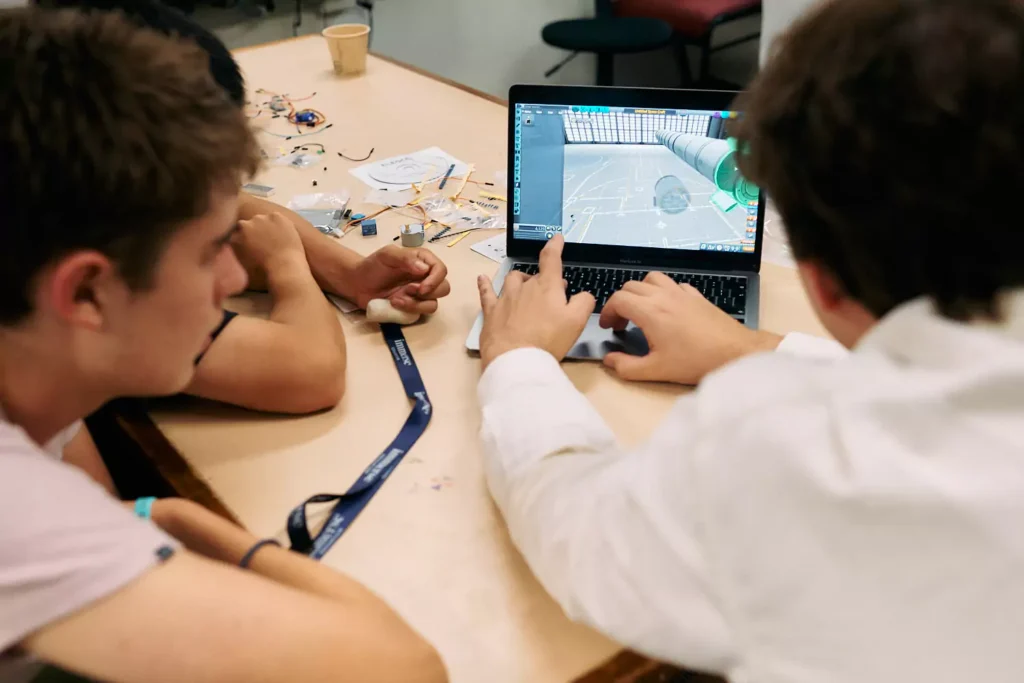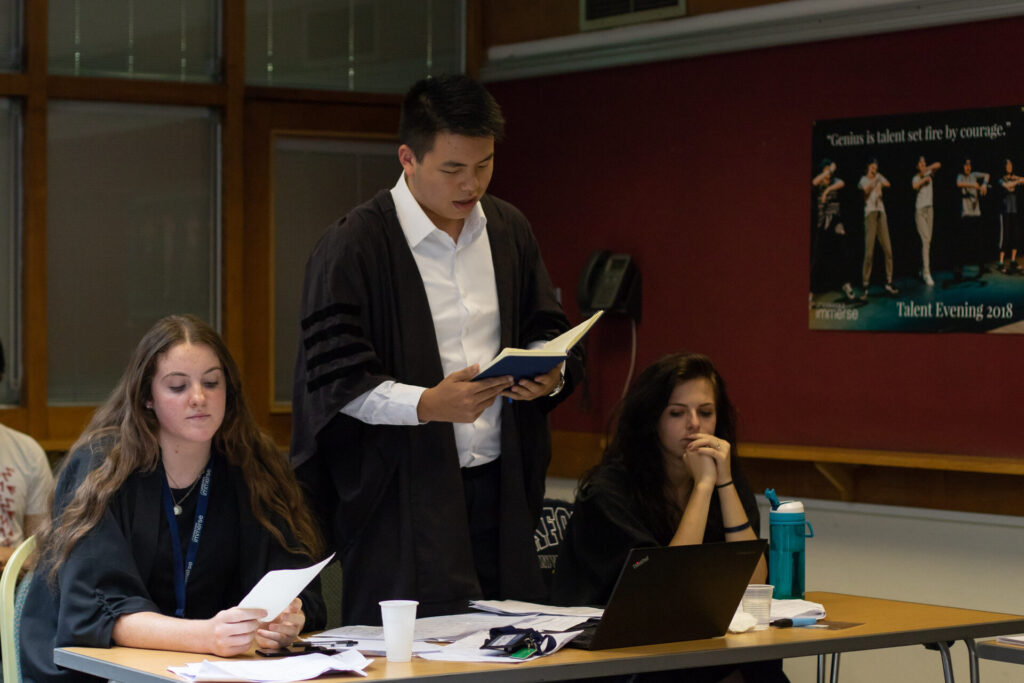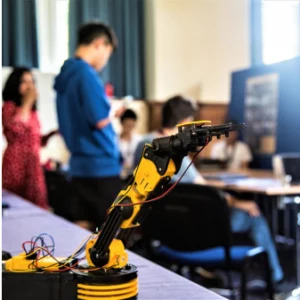Artificial Intelligence (AI) is rapidly transforming education, reshaping how students learn and how teachers instruct. Many educators have recognised a chance to use this new technology to help their students thrive, and are asking “how can AI help students in practical and meaningful ways?”
From personalised learning and productivity boosts to fostering inclusion and supporting creativity, AI-powered tools are revolutionising how students engage with their studies and develop vital skills. This comprehensive guide dives into how AI is helping students, outlining 10 key benefits, exploring specific tools students can use, and addressing important challenges to consider for responsible implementation in educational settings.
As flexible learning becomes increasingly popular, many students combine AI-driven tools with programmes such as an online summer school, which allow them to experience structured, expert-led learning remotely while developing the same independent study habits supported by artificial intelligence.
How Can AI Help Students? Exploring AI’s Broad Impact on Student Learning
AI is a branch of computer science that enables machines to mimic human intelligence – understanding language, recognising patterns, solving problems, and learning continuously. In education, this means that AI systems can analyse vast amounts of student data to create personalised learning experiences, adapt instructional content, and provide instantaneous feedback in ways that were impossible with traditional methods.
Students fascinated by the principles behind artificial intelligence often start exploring related subjects through programmes like a computer science summer school, where they can gain foundational programming and data analysis experience that complements AI-focused learning.
When educators ask how can AI help students, the answer encompasses multiple dimensions. AI enhances learning by adapting to individual student needs, making complex content accessible, and fostering independence. It assists teachers by automating routine tasks and providing rich insights into student progress. Fundamentally, AI can transform classrooms from uniform lecture halls into dynamic spaces that promote creativity and critical thinking tailored to each learner.
How AI helps students varies widely: it can suggest personalised exercises, simulate real-world experiments via virtual labs, provide language practice tools, or even detect when a student is struggling and offer proactive support. While we can recommend tools and approaches, it’s ultimately up to educators to draw on their understanding of their students’ unique needs and strengths to thoughtfully integrate new technologies into classroom practice and learning plans.
These capabilities create not only more engaging educational environments but also more equitable ones by offering tailored opportunities that overcome diverse learning challenges.
Five to Seven Ways Students Use AI to Learn Better
Educators interested in the positive effects of AI in education will find these key applications especially valuable for their students:
- Personalised Learning Pathways
AI analyses vast pools of performance data to tailor lesson plans, homework, and assessments to individual student abilities and learning styles. Instead of a one-size-fits-all curriculum, AI helps students progress at their own speed – spending more time on challenging topics while accelerating through material they grasp quickly. This personalised approach empowers students to learn more efficiently and with less frustration.
For example, AI software can monitor how quickly a student answers questions or the types of mistakes they make, adjusting difficulty levels accordingly. This continuous adaptation both motivates and supports learners at every stage. Educators can leverage insights from these systems to fine-tune instruction and intervene when necessary. - 24/7 Chatbots
Students no longer need to wait until class or office hours to get help. AI-powered chatbots and virtual tutors provide immediate assistance, answering questions, explaining concepts, or hinting at problem-solving strategies anytime and anywhere. This empowers learners to take ownership of their education and stay engaged beyond the classroom — even when you’re offline and taking a well-earned break. - Writing Assistance and Enhanced Research
Many students struggle with organising thoughts or proper grammar. AI writing assistants support the drafting process by suggesting structures, checking grammar, and even helping brainstorm ideas. These tools foster confidence and help students develop stronger writing skills over time.
On the research side, AI can summarise large texts, suggest relevant sources, and help manage citations, allowing students to focus more on critical thinking and synthesis of ideas rather than getting bogged down in clerical tasks. - Accessibility and Inclusion
AI tools break down barriers for students with disabilities by providing speech-to-text, real-time captioning, screen readers, and language translation services. This promotes equitable access to information and enables special needs students to participate fully in lessons with much greater ease and independence. - Gamification and Immersive Experiences
Through gamified learning environments powered by AI, students remain motivated by rewards and challenges tailored to their progress. AI also drives immersive platforms featuring augmented or virtual reality, which bring abstract or complex concepts to life – for example, virtual field trips or interactive science simulations. These approaches cultivate deeper engagement and real-world understanding.
Some educational games use AI to adapt as students play – for example, adjusting difficulty based on performance or offering tailored hints. Others are static, offering the same experience to every user. Recognising which tools respond dynamically (and how) helps teachers make informed choices about which resources support personalised learning most effectively.
- Progress Tracking and Self-directed Learning
AI dashboards visualise student progress in real time, highlighting strengths and areas needing improvement. This transparency encourages students to reflect on their learning habits and goals, fostering valuable metacognitive skills that support life-long learning. - Language Learning Tools
AI chatbots and language apps that offer instant pronunciation feedback, translation, and conversational practice allow students to advance their fluency independently. These tools replicate near-human interaction, providing a safe space for trial and error beyond the classroom.
A prominent example is Duolingo, a widely-used AI-powered language learning platform that has revolutionized how students learn languages globally. Duolingo uses adaptive AI algorithms to personalize lessons according to each learner’s pace and proficiency, ensuring an optimal challenge level that maintains engagement. The app includes interactive exercises covering speaking, reading, writing, and listening skills, combined with gamified elements to motivate learners consistently.
These examples highlight how AI helps students overcome traditional barriers to learning and create personalised, adaptive, and engaging educational experiences.
Benefits of Using AI by Students
AI integration in education offers numerous benefits that make it an indispensable support for students:
- Personalisation maximises engagement by tailoring instruction to individual learning styles, preferences, and pace, reducing frustration and boredom alike.
- Accessibility drives inclusion by providing adaptable tools for diverse learners, including students with sensory or cognitive disabilities.
- Immediate feedback accelerates learning by enabling students to identify and correct mistakes promptly, leading to more effective study sessions.
- Efficiency gains free up more time for high-value learning activities by automating routine tasks such as grading or scheduling.
- Cost-effectiveness and scalability allow schools to provide high-quality educational resources to large groups of students without major increases in staffing.
- Resource-rich learning environments supported by AI spur creativity and critical thinking through interactive tools and real-time data analysis.
- Support for multiple learning styles through multimodal content delivery caters to auditory, visual, kinesthetic learners, and more.
Educators embracing these pros of AI in education find that it enhances their ability to differentiate instruction and monitor individual student progress effectively, leading to improved academic outcomes.
Join the Immerse Education 2025 Essay Competition
Follow the instructions to write and submit your best essay for a chance to be awarded a 100% scholarship.
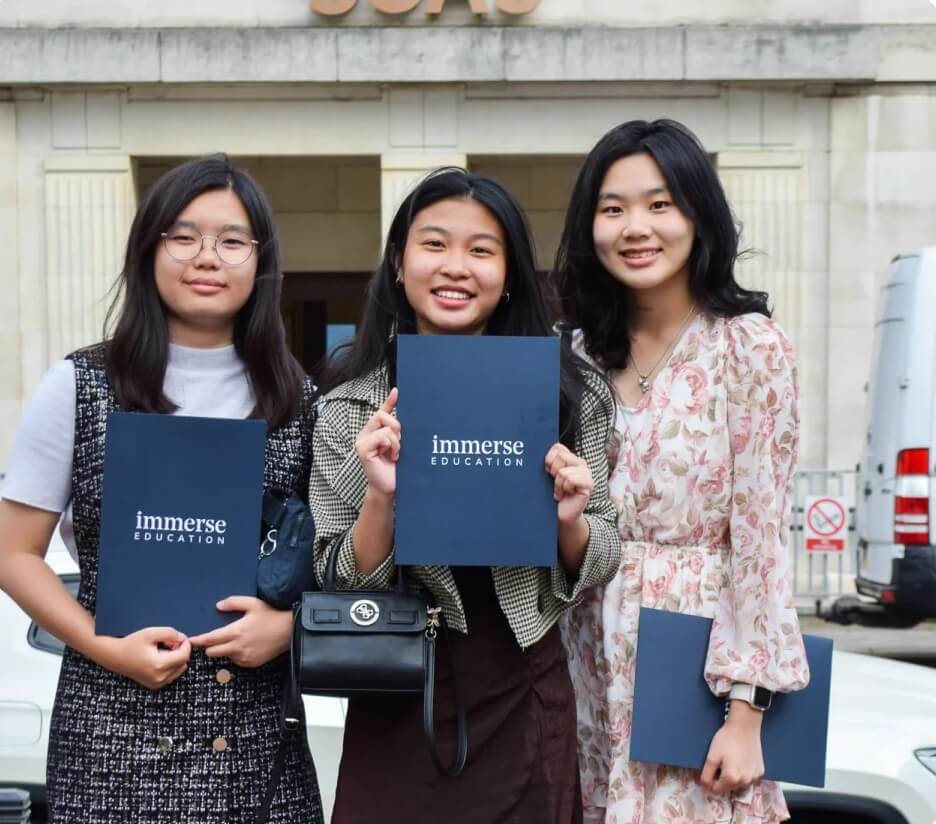
AI Tools That Students Can Use
The AI edtech ecosystem is expanding rapidly, with many innovative tools designed specifically for student productivity and learning enhancement. Some prominent categories and examples include:
- AI Writing and Productivity Tools: Platforms that assist with drafting essays, grammar correction, idea generation, and study planning. Immerse Education offers a curated list of AI Productivity Tools geared toward student success.
- Intelligent Tutoring Systems: Adaptive software that delivers personalised lessons and quizzes, providing immediate explanations and tailored problem-solving paths.
- Virtual Assistants and Chatbots: On-demand academic help that answers questions, guides homework, and aids research.
- Accessibility Software: Speech-to-text, real-time captions, screen readers, and translation tools to support learners with special needs.
- Creative AI Tools: Image generators, music composition apps, and storytelling aids that unlock student creativity and support arts education.
Challenges and Responsible Use of AI by Students
While AI presents exciting opportunities, it also raises important challenges that educators should address to ensure technology is used responsibly:
- Academic Integrity Risks: The ease of generating AI-produced content can tempt students to plagiarise or overly rely on AI, impeding learning and principal values.
- Technology Access Inequalities: Without equitable access to devices and internet, AI’s benefits may disproportionately favor privileged students, exacerbating educational inequities.
- Accuracy and Bias in AI Outputs: AI models can reproduce errors or biased perspectives present in their training data, requiring student and teacher vigilance to critically assess information.
- Privacy and Data Security: The use of AI tools involves extensive data collection. Ensuring that student information is handled securely and transparently is paramount.
Educators should guide students on how to use AI responsibly, emphasising it as an augmentation tool rather than a shortcut. Teaching best practices – such as proper citation of AI-generated work, critical evaluation of AI feedback, and maintaining academic honesty – fosters ethical and effective adoption.
In fostering responsible use, AI can truly help students become independent learners, critical thinkers, and innovative problem solvers ready for 21st-century challenges.
Supporting Students to Pursue Higher Education and Careers in AI
As teachers look to prepare their students not just for immediate academic success but for future career paths, understanding how AI can help students includes guiding them towards advanced study and professional opportunities in this rapidly expanding field. AI is integral to many industries, and equipping students with foundational knowledge and skills in AI opens doors to rewarding academic and career trajectories.
Immerse Education offers a range of programmes specifically designed to deepen student understanding of artificial intelligence and provide hands-on experience, making these invaluable resources for educators to recommend. For example, the Artificial Intelligence Online Research Programme allows high school students aged 13 to 18 to engage with rigorous academic content and undertake individual research projects under expert mentorship. This programme nurtures critical thinking and independent study habits, key for university success in STEM disciplines.
For instance, programmes similar to an engineering summer school or a robotics workshop, where topics such as design systems, automation, and applied problem-solving mirror the same interdisciplinary skills valued in AI-driven fields.
Complementing this is the Career Insights Pathway, which offers a comprehensive introduction to a range of professions, including artificial intelligence. This two-week programme combines expert-led workshops, practical projects, and visits to industry settings, giving students firsthand exposure to professional environments. It is ideal for those exploring tech-focused summer school opportunities as well as various career options in technology, equipping participants with transferable skills and insight into the application of artificial intelligence principles.
For those seeking an inspiring academic environment, Immerse Education also runs in-person academic AI summer programmes at prestigious universities such as Cambridge and Oxford. These courses cover core AI principles, machine learning, ethical considerations, and contemporary applications, supporting students who aspire to study AI or computer science at university level.
By integrating these programmes into your guidance, you can help students explore AI beyond the classroom, providing a clear pathway from school-based learning to advanced study and career readiness in technology fields. For teachers looking to discuss pathways in AI with their students, Immerse Education’s Why Study Artificial Intelligence page offers various perspectives on the benefits of pursuing an AI qualification.
Conclusion
Artificial Intelligence holds transformative potential to support student learning, offering personalised, accessible, and engaging educational experiences. As tools continue to evolve, educators who understand how AI can help students will be better equipped to guide their classrooms through this new frontier.
By embracing AI thoughtfully – leveraging its benefits while navigating challenges – teachers can enhance instruction and empower students to thrive academically and creatively. Encouraging responsible AI use ensures that students gain confidence, develop deeper skills, and prepare for an increasingly digital world.
The future of education is collaborative between human insight and intelligent technologies. Together, they can unlock exciting new opportunities for learners everywhere.




